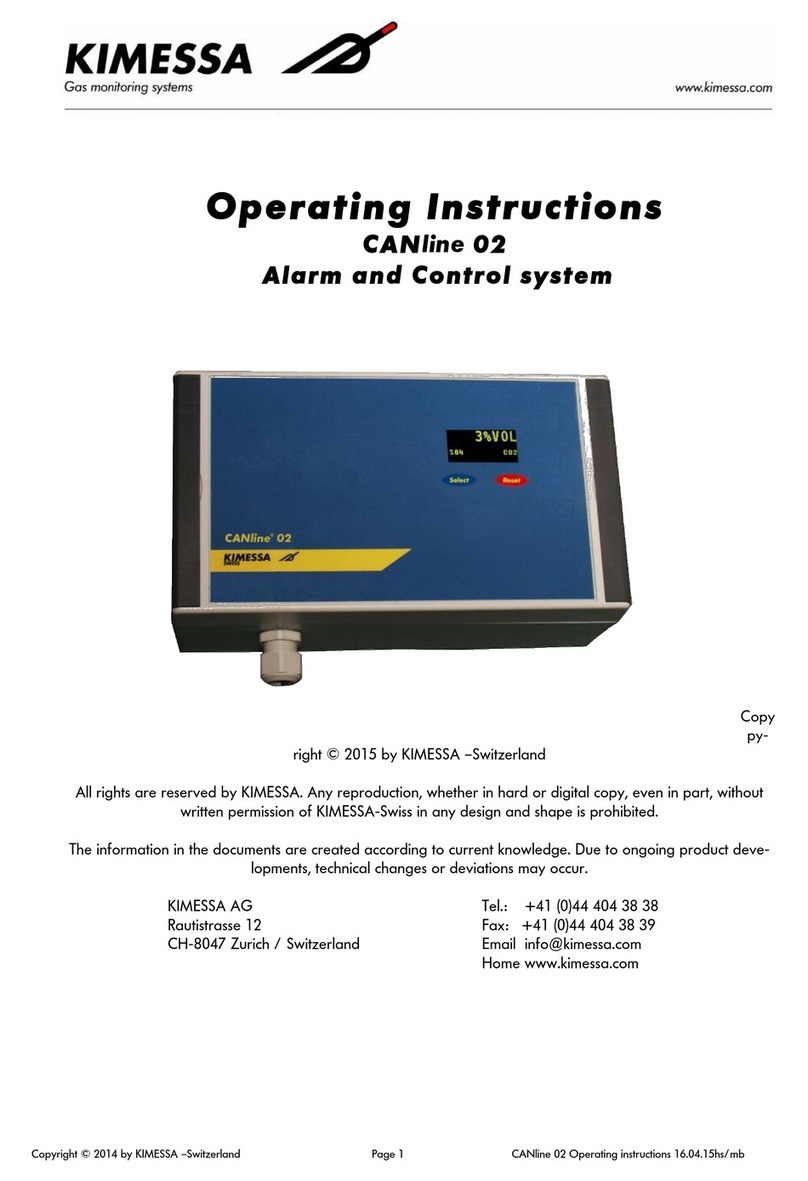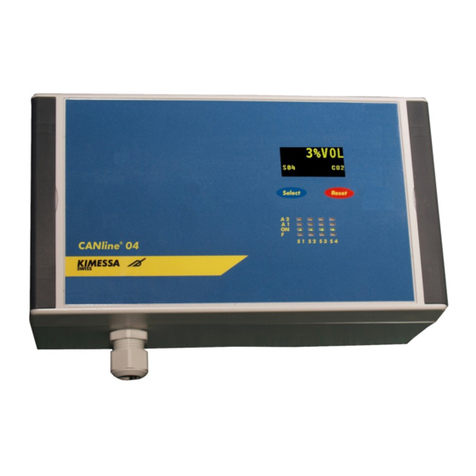Copyright © 2015 by KIMESSA –Switzerland Page 2/62CANline 04 Operating instructions 28.07.15mb
Contents
1GENERAL INFORMATION ................................................................................................... 5
1.1 LIMITATION OF LIABILITY ...................................................................................................................................................... 5
1.2 RETENTION OF TITLE ............................................................................................................................................................. 5
1.3 WARNING ............................................................................................................................................................................ 5
1.4 WARRANTY........................................................................................................................................................................... 6
1.5 CONDITIONS FOR STORAGE AND TRANSPORT .................................................................................................................. 6
1.6 DISPOSAL OF THE PRODUCT ................................................................................................................................................ 6
1.7 IMPORTANCE OF INSTRUCTIONS......................................................................................................................................... 6
1.8 RISK /POTENTIAL HAZARD .................................................................................................................................................. 7
1.9 SAFETY /RESPONSIBILITY ..................................................................................................................................................... 7
1.10 IF EX-MEASURING SENSORS ARE CONNECTED IN HAZARDOUS AREAS THE FOLLOWING MUST BE OBSERVED:......... 7
1.11 DEFINITION OF THE SIGNAL WORDS ................................................................................................................................ 9
1.12 TARGET GROUP,ELECTRICIANS AND MAINTENANCE TECHNICIANS;PERSONAL PROTECTIVE EQUIPMENT.................. 9
2USAGE ............................................................................................................................... 12
2.1 INTRODUCTION ..................................................................................................................................................................12
3CANLINE 04 CONSTRUCTION........................................................................................... 13
4INSTALLATION .................................................................................................................. 14
4.1 CONDITIONS OF USE/INSTALLATION/WHERE AND HOW WILL THE CONTROL UNIT BE MOUNTED?......................14
4.2 MECHANICAL INSTALLATION OF CANLINE 04 ...............................................................................................................15
4.3 DELIVERY CONTENTS,CANLINE 04 GAS DETECTION CONTROL UNIT ..........................................................................16
4.4 CANLINE/OPENING/CLOSING THE CONTROL UNIT .....................................................................................................16
4.5 INSTALLATION MEASUREMENTS.........................................................................................................................................16
4.6 ELECTRICAL INSTALLATION/CONNECTING THE CONTROL UNIT....................................................................................16
4.7 T2 AMP FUSES ....................................................................................................................................................................17
4.8 POWER SUPPLY....................................................................................................................................................................17
4.9 SENSOR-CABLE BUS-INSTALLATION ................................................................................................................................17
4.10 KIMESSA-CABLE .............................................................................................................................................................18
4.11 ELECTRICAL INSTALLATION/EMC AND ATEX ...............................................................................................................19
5CANLINE 04 CONNECTIONS ............................................................................................ 22
5.1 WIRING SCHEMATIC FOR 2X 4..20MADETECTORS .......................................................................................................23
5.2 WIRING SCHEMATIC FOR 2X DIGITAL BUS DETECTORS .................................................................................................23
5.3 WIRING SCHEMATIC FOR REALY CONTACST (STANDARD) ..............................................................................................24
6USER COMFORT................................................................................................................. 25
6.1 FRONT VIEW,DIMENSIONS AND CONTROL ELEMENTS ...................................................................................................25
6.2 FRONT FUNCTIONS ............................................................................................................................................................25
6.3 ALARM RESET.......................................................................................................................................................................26
6.4 "SWITCH TO INACTIVE"BUTTON FUNCTION,ONE SENSOR ..........................................................................................26
6.5 " SWITCH TO INACTIVE " BUTTON FUNCTION,SEVERAL SENSORS ................................................................................26
7SWITCHING ON ................................................................................................................ 27






























